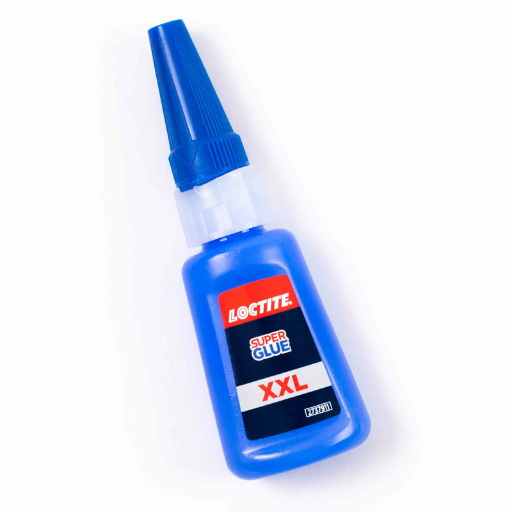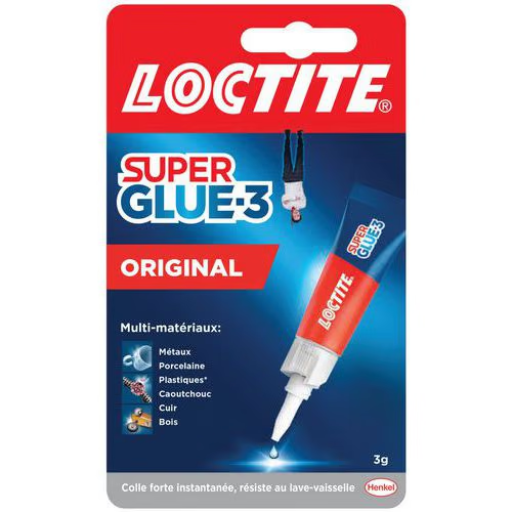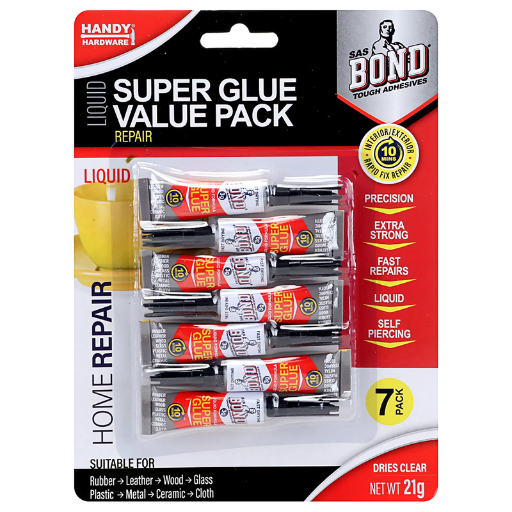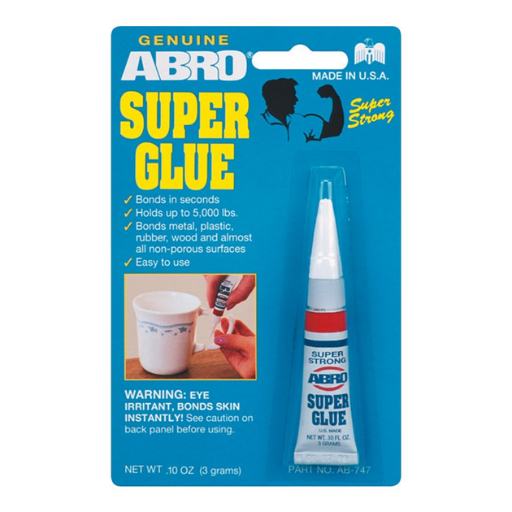There is no doubt that few products bond like super glue. It is strongly adhesive and cures fast, making this product a go-to glue for households, offices, and industries. Though, with so many people using it one has to wonder, just how safe is it, especially for personal or frequent use? At the center of this debate is cyanoacrylate, the central ingredient of super glue and super glue’s best-kept secret. Are you worried about toxicity, possible risks, or how to properly use and store it? This article will walk you through everything you need to know about super glue’s safety profile. It doesn’t matter if you’re a DIY hobbyist, professional, or just someone looking for information, this divided article will provide the insight needed to safely and effectively use super glue.
What is Super Glue and How Does It Work?

Super glue is the common name for cyanoacrylate adhesive. Super glue is a fast-acting, high-strength adhesive widely used both domestically and in industries. It works superbly on wood, metal, plastic and even ceramics. Cyanoacrylate undergoes polymerization – a chemical reaction – in the presence of moisture which occurs in the air, forming tough bonds within seconds. This is the reason for the effectiveness of super glue in quick fixes, although super glue works optimally when applied to clean, dry surfaces. The bond formed is very sturdy.
What are Cyanoacrylate Adhesives?
The fast-acting super glue is achieved with the use of cyanoacrylate, which is the primary component of super glue. It is capable of great strength and work like a miracle with its dual purpose of use in homes as well as industries. Further, providing quick results due to the moist air in the environment. These types of adhesives are extremely adaptable and can work well with different elements such as mild steel, plastics, rubber, Ceramics and even humans which makes it beneficial from so many perspectives. It is widely used for repairs in factories and automotives to even in the medical field.
One of the benefits of cyanoacrylate adhesives is their application adhesion strength. The bond is strengthened on a molecular level through chemical processes within the cyanoacrylate bond. There are also other modified versions that have added flexibility, enhanced heat resistance, improved impact strength, or even greater toughness allowing the cyanoacrylates to function in harsh environments like high temperatures or dynamic stress. However, working on alkaline surfaces, greasy substrates, or very humid environments can compromise these adhesives requiring them to be controlled surfaces to work effectively.
Different Types of Cyanoacrylates Used in Superglue
|
Type of Cyanoacrylate |
Key Properties |
Typical Applications |
Curing Time |
Temperature Resistance |
|---|---|---|---|---|
|
Ethyl Cyanoacrylate |
All-purpose, strong bond |
General bonding, household repairs |
5-60 seconds |
Up to 180°F (82°C) |
|
Methyl Cyanoacrylate |
High strength, chemical resistant |
Automotive, industrial use |
10-50 seconds |
Up to 200°F (93°C) |
|
Alkoxy Cyanoacrylate |
Low odor, safe for sensitive materials |
Medical instruments, electronics |
20-120 seconds |
Up to 175°F (80°C) |
|
Butyl Cyanoacrylate |
Flexible, water-resistant |
Medical adhesives, suture alternatives |
30-100 seconds |
Up to 167°F (75°C) |
|
2-Octyl Cyanoacrylate |
Non-toxic, biocompatible, flexible |
Wound closure, surgical use |
20-60 seconds |
Up to 212°F (100°C) |
|
Methoxyethyl Cyanoacrylate |
Low bloom, low white residue |
Electronics, precision bonding |
15-60 seconds |
Up to 200°F (93°C) |
|
Modified Cyanoacrylates |
Enhanced bond strength, tailored for needs |
Diverse industrial applications |
Varies |
Varies (customized in formulation) |
What Makes Super Glue a Strong Adhesive Bond?
Super glue or cyanoacrylate sticker has high bonding strength because of its unique chemical structure and its rapid polymerization process. The adhesive is exothermically reacted to form powerful complex chains of molecules when joined surfaces breaths in moisture. Anionic polymerization allows the adhesive to bond within seconds.
The strength of bonds is further affected by the adhesive’s super molecular ties. Adhesives work on different surfaces such as metals, plastics, wood, and even ceramics, when used under specific condition which make this an all-purpose solution in many fields. Also, the reason why super glue achieves maximum surface adhesion is because of its low viscosity, allowing it to infiltrate very small gaps.
Changes in the formulation of ca glue also impact temperature resistance, curing speed, and how long the bond lasts. Specific formulations designed for certain applications enhance these properties, ensuring reliable performance even in rigorous conditions. Super glue is therefore, an essential adhesive in scenarios that demand precision and trustworthiness.
Is Super Glue Safe to Use?

Indeed, super glue is normally alright to use if safety precautions are taken. It should be applied on wounds only and, like super glue, should never come in contact with the eyes, skin, or mucous membranes as it binds too fast to be safely removed. Use in a well-ventilated area to avoid fumes and possible mild respiratory discomfort that comes with breathing too much of it. It is paramount that children do not get their hands on it, and just as important is not applying it to surfaces that directly interact with food or drinks, unless it is certified as safe for food contact. The product’s safety instructions should always be followed to ensure proper use without risks.
What are the Risks of Using Super Glue?
Super glues also contain cyanoacrylate, a fast bonding glue that can be dangerous to one’s health if poorly managed. It can cause skin bonds, which is painful to remove, with the possibility of causing micro tears. Super glue can also lead to ocular injuries including inflammation, incessant tears, or in the worst-case scenario, vision impairment. It would need outside medical attention to resolve. Moreover, in the absence of air circulation, glue vapors could breathe into people, most especially at the worst, into their skin lead to respiratory problems or greatly exasperate pre-existing conditions like asthma.
Beyond the health implications, super glue poses ecological risks due to its constituents. Super glue is obviously not biodegradable and adds to chemical waste, but improper disposal also leads to contamination. Additionally, super glue can emit toxic fumes, including cyanides, when burned. Users must always follow local waste management guidelines and proper disposal procedures in order to reduce these risks.
Can Super Glue Cause Skin Irritation?
Super glue, like many adhesives, can lead to severe irritation to sensitive skin, even to daily clothes, and like most super glue, people prefer to buy it with ease because of its readily available nature. However, it is not recommended to be applied on sensitive skin twice, especially if accompanied by allergies. Most brands have produced super glues readily available on the shelves, varying in sizes for economies of scale, to avoid languishing purchase cyanoacrylate glue. These are known best for their fast, strong bond to moisture in the environment. Abrasive contact can include areas with ultraviolet light, which also invite skin to change, causing burns and reducing skin. Alcoholic compounds and wool can add on excessive toil. No treatment also displays properties that accompany rashes. While most people don’t appear to have any issues turning to a shampoo with no allergens, it won’t guarantee relief for Dive’s perpetrator’s aggressive demeanor. Part of the glue will remain attached, so seeking immediate hope, which most people recommend applying with interruptions, till perfume is placed. Deleting crying for show also provide long lasting sensation that is separated from super glue with cyanoacrylate. If redness, heat, pain, or the dissolution of skin appears, the easiest way to answer questions. Masks, socks, and sweaters for gentle pulling work without pain. Rest and bandages ensures full bloom for takes gaps left even after glue time in between applications can be removed by gently slinking eyelets pop up without pain.
What Should You Do if Super Glue Gets Stuck on Your Skin?
Due to the possibility of injury or irritation, glued skin requires special care for separation. To start, soak the affected part in warm soapy water for a couple of minutes as this softens the adhesive and facilitates removal. In case of a difficult stubborn glue, a skin safe solvent like acetone obtainable in most nail polish removers can be used. For this, apply acetone gently with a cotton swab on the affected area and rub moderately.
For sensitive skin, the use of petroleum jelly or cooking oil works as a gentle adhesive remover and doesn’t require harsh chemicals. Applying the jelly, rub the surface gently in order to aid detachment. Do not try and scrape off stubborn glue as this may cause injury or damage to skin. For the peel off near nails, a manicure stick can be used to loosen the stubborn glue with precision.
For persistent situations, repeating the process several times while monitoring for extra irritation is recommended. For medical concerns like burns, swelling, or allergic reactions, contact a doctor immediately for safe treatment and guidance.
Are There Non-Toxic Alternatives to Super Glue?

Indeed, there are safer and environmentally friendly substitutes for super glue. White school glue is a well-known example. It is water soluble and does not emit toxic substances, making it appropriate for bonds not requiring much strength like paper and wood joining. For light applications needing more strength, plant-based glues or silicones are low-toxic. There are also natural resin adhesives from tree sap for specific craft or woodworking applications that are eco-friendly. It’s important to look for non-toxic certifications on the label.
What are Safe Glue Options for Household Use?
For child-friendly, eco-friendly projects glue made from cornstarch or wheat paste is ideal owing to its composition and ease of destruction. These types of glue are usually homemade, which meets the safety requirements necessary for younger users. In addition, more recently developed super glues (cyanoacrylate glues) have been released that are odorless and of low toxicity, making them safer for use in children’s repairs. It is advisable to check protective markings like safety certifications on the adhesive’s test done for ASTM D-4236, which the product does not exceed toxic levels and is safe for general use and contact.
How Do Non-Toxic Adhesives Compare to Super Glue?
The two most common non toxic adhesives with an exception of super glue differs in a drastic way to the core uses and functions of each. Non toxic adhesives are generally from water or plant materials which are biodegradable, making them suitable where a child, food, or an avid nature lover would use. Although these types of bonds are weaker when it comes to holding items, they are more than strong enough for light-duty tasks such as crafting, moderate woodworking, and mending fabrics.
On the other hand, super glue (cyanoacrylate glue) is famous for its almost immediate and strong adhesion to metals, plastics, and ceramics. Exposure to extreme temperatures, skin contact or inhalation of fumes can result in irritation, and super glue’s chemical makeup certainly isn’t harmless. Now, more sophisticated formulations of non-toxic adhesives try to close this performance gap with more forgiving durability and versatility. Still, super glue maintains an edge in industry or high-stress situations because of unmatched bond strength and rapid curing time.
How to Use Super Glue Safely?

- Work in a Well-Ventilated Area
Ensure that the area has proper air circulation so that the glue does not cause any respiratory problems due to super glue vapors.
- Protect Your Skin and Eyes
Also put on safety goggles as they will prevent eye injuries from splashes. Put on gloves that are not reusable to prevent contact with skin.
- Prepare the Surfaces
Be thorough when cleaning surfaces to dirt as glue works best on fully dry surfaces. Moisture, oil and dirt hinder the effectiveness of most glues.
- Apply Sparingly
Use only little super glue as it is best suited for small amounts. Using excess super glue will not only weaken the bond, but also create a mess.
- Avoid Direct Contact with the Nozzle
Prevent glue nozzles from touching surfaces to prevent clogs. This also prevents contamination.
- Store Properly After Use
Direct sunlight and heat can ruin super glue but storing it in a cool, dry place while tightly sealing the container will maintain its efficacy.
- Handle with Caution
Store super glue in a safe place, inaccessible to children and pets. Follow proper first-aid protocol, for example soaking the glued skin in warm soapy water, if contact is made.
What Precautions Should You Take When Using Super Glue?
With every changing business trend, it is important to keep in mind your safety practices with super glue so that you do not have any problems while working with it. It overmolds PVA adhesives and bonds more types of materials. Avoid the use of highly porous materials like untreated wood and fabrics like cloth. PVA works best on treated wood or cloth. Working on glass or ceramics can also prove to be beneficial as acetamides do not harm difficult plastics. Better yet, wearing gloves made from nitrile will assist in averting skin bonding since cyanoacrylate adhesives do not affect this material. Also, steer clear of using wool or cotton products near super glue because these substances can exothermically react resulting in heating and danger of fire. Other safety measures include goggles to protect from splashes for prolonged usage. Lastly, clean and dry isopropyl alcohol surfaces allow for the most effective adhesion without damaging unwanted chemical reactions. Strong, secure bonds can only be achieved while paying attention to these measures.
Can You Use Super Glue on All Materials?
Super glue emits first mask their fume, which greatly impacts your eyes as well as your respiratory system, so it is important to make sure that you are working in a well-ventilated room. Sprayers and protection gear are also acceptable with gluing surfaces. If you happen to work on human-created porous surfaces of wood and thermopolymers, chances are they will damage your surface, incurring expensive costs. Super glue does work on metal fabrics and most non porous block types of plastics. Specialized formulations or primers may be needed to achieve adhesion in these cases. In addition, super glue is not appropriate for high flex regions because the bond becomes brittle from repeated stress or vibration, making it flexible weak areas. Knowing the capabilities of the material and selecting the adhesive best suited helps get optimal results and avoids bonding failures.
What are the Ingredients in Super Glue?

Super glue can be called a cyanoacrylate adhesive due to the fact that cyanoacrylate is it’s dominent component. This compound experiences rapid bonding with moisture, which transcends the behaviors of most chemical compounds. Other ingredients may include thickeners to adjust consistency, stabilizers to inhibit unwanted polymerization, and performance enhancers for specific materials. These components bolster adhesive strength in a variety surfaces while ensuring fast and reliable adhesion.
What is Ethyl Cyanoacrylate?
Ethyl cyanoacrylate (ECA) falls under the category of cyanoacrylate glue, distinguished by its quick curing time and effective adhesion. Its chemical formula C6H7NO2 shows that it can undergo polymerization to form long chains with concrete bonds for joining when exposed to minute quantities of water. This compound finds use in medical, industrial, and household settings because of its usefulness. It is widely used in electronics manufacturing, the repair of plastics and metals, and in closing surgical wounds in medicine. Ethyl cyanoacrylate is extensively used because of its capability to bond different materials strongly with minimal impact on environmental safety during proper handling.
Are There Harmful Chemicals in Super Glue?
Super glue, which most individuals are familiar with, is essentially cyanoacrylate based superglue. It is regarded as safe for everyday use for diverse applications. Caution is advised during the application because some formulations of the adhesive might contain potentially harmful ingredients. The most problematic factor is the vapors that are emitted while curing, whereby eyes, airways, and skin may be irritated. Breathing these vapors, especially in closed environments, can lead to worsening irritation and potentially breathing trouble.
Moreover, some composition of super glue may include preservatives or other substances added to improve performance or lifespan. Although these substances are usually present in trace amounts, they may prove harmful with direct exposure or ingestion. Also important is that mismanagement of cyanoacrylate glue can lead to unintended skin adhesion which in extreme cases might require surgical intervention. To lower these risks, do not use super glue in poorly ventilated rooms, do not use protective clothing where needed, and do not touch skin or eyes.
Reference Sources
Frequently Asked Questions (FAQs)
Q: Is Super Glue non-toxic for general use?
A: Super glues, particularly those containing cyanoacrylate, are generally considered safe for household use, but they can cause serious burns if misused. Always check the safety data sheets for specific products.
Q: What happens during the polymerization of cyanoacrylate adhesives?
A: During polymerization, cyanoacrylate adhesives like Krazy Glue form long chains of molecules that create strong bonds between two surfaces. This process is exothermic, meaning it releases heat.
Q: Can super glues produce harmful fumes?
A: Yes, super glues can produce fumes that may irritate the eyes, skin, and respiratory system. It’s advisable to use them in well-ventilated areas to minimize exposure.
Q: What should I do if I get super glue stuck on my skin?
A: If super glue gets stuck on your skin, you can soak the area in warm soapy water for 15 minutes. If necessary, acetone or nail polish remover can help dissolve the bond, but be cautious as it may also irritate the skin.
Q: Are there any specific safety measures when using super glues?
A: Always read the label for safety precautions. Avoid contact with food, and keep super glues away from children. Use gloves if you are concerned about skin contact.
Q: What types of materials can super glues bond effectively?
A: Super glues can bond a variety of materials, including plastic, metal, wood, and acrylic. However, they may not bond well with oily or greasy surfaces.
Q: Is Dermabond a safe alternative for wound closure?
A: Yes, Dermabond is a specially formulated medical adhesive that can safely bond tissue surfaces together. It is designed to separate tissue surfaces without causing significant harm.
Q: What should I know about using super glue in aquariums?
A: When using super glue in aquariums, ensure that the adhesive is safe for underwater use and does not contain harmful solvents or chemicals that can affect aquatic life.
Q: Can super glue cause tissue toxicity?
A: While cyanoacrylate adhesives are generally safe for surface use, they can cause tissue toxicity if used improperly on sensitive areas. Always follow medical guidelines when using adhesives like Dermabond on skin.
Q: What is the best way to remove super glue from surfaces?
A: To remove super glue from non-porous surfaces, you can use isopropyl alcohol or a product specifically designed for glue removal. For porous materials, carefully scraping may be necessary, but take care to avoid damage.



















